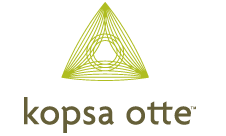Year-end tax planning: claim the non-business energy property credit while you can...
Of the many energy-saving provisions in the Code, few are more accessible to ordinary taxpayers than the $500 credit for non-business energy property. The credit can apply to relatively inexpensive, easy-to-do (perhaps even do-it-yourself) items—the installation of insulation (e.g., exterior caulking and weather-stripping), doors, and windows—as well as slightly more expensive but standard items such as central air conditioning and heat pumps. However, currently this credit only applies through 2011, and the prospects for an extension are uncertain. As a result, homeowners should consider accelerating energy-saving home improvements into this year if doing so will generate a credit.
Summary of the credit: The non-business energy property credit, as most recently extended, applies only through Dec. 31, 2011. A taxpayer can claim a credit on Form 5695 equal to 10% of the cost of: (1) qualified energy efficiency improvements, and (2) residential energy property expenditures. There is a lifetime credit limit of $500 (with no more than $200 due to windows and skylights) over the total credits allowed to the taxpayer for all earlier tax years ending after 2005. (The expenses must be for property originally placed in service by the taxpayer and made on or in connection with a dwelling unit located in the U.S., and owned and used by taxpayer as his principal residence at the time of installation.
Qualified energy efficiency improvements are energy efficient building envelope components, such as (a) insulation materials or systems specifically and primarily designed to reduce heat loss/gain that meet criteria set by the International Energy Conservation Code (IECC); or (b) exterior windows, skylights or doors, or any metal roof with pigmented coating or asphalt roof with cooling granules specifically designed to reduce heat gain, installed on a dwelling unit that meet Energy Star program requirements. The component must be expected to last for at least five years This requirement is met if the manufacturer offers a two-year warranty to repair or replace at no extra charge.
Residential energy property expenses are expenses for qualified energy property (including labor costs for onsite preparation, assembly, or original installation) that meets specific standards. The credit allowed for energy property expenditures can't exceed:
... $300 for any energy-efficient building property (electric heat pump water heater, electric heat pump; central air conditioner; natural gas, propane or oil water heater; or a stove burning biomass fuel to heat or provide hot water to a taxpayer's residence in the U.S.) that meets specific energy efficiency standards;
... $150 for a qualified natural gas, propane, or oil furnace; or qualified natural gas, propane, or oil hot water boiler; or
... $50 for an advanced main air circulating fan.


